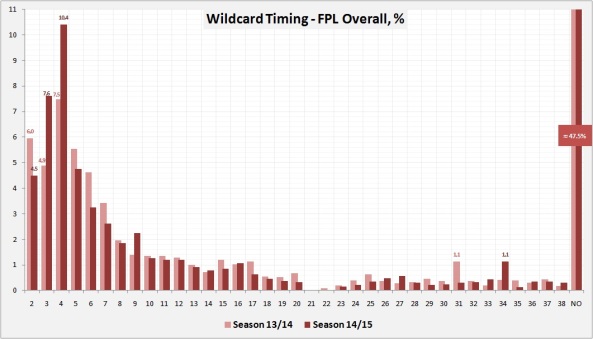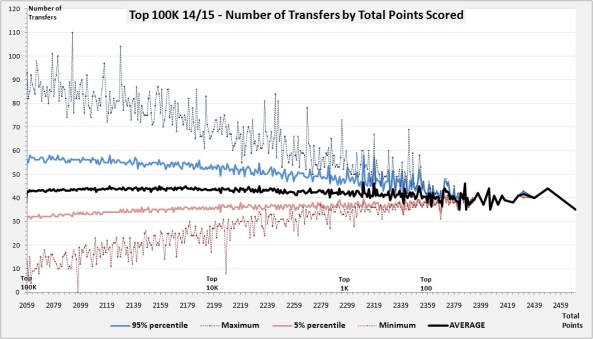Today, I finish my post-season series of research articles with a detailed look at wildcards (the main ones). In this article, you’ll find a gazillion of different charts, notes, observations, as well as a hall of fame and a hall of shame with the best and the worst wildcarders of the season. This article is pretty huge, so be careful. Opinions and critical remarks are welcome 😉
Wildcard Timing in FPL Overall
When do FPL teams normally play their main wildcards?

A brief look at the times when main wildcards were played in FPL during the last two seasons suggests that wildcard timing doesn’t change much from season to season. Which particular gameweeks are most popular depends on season fixtures, but the general picture remains the same:
- Almost every second FPL team doesn’t play its wildcard at all (47.5% of teams in both seasons);
- Most wildcards are played during the starting spell of a season;
- Out of those who play their wildcards, the vast majority do so during the first season half (88% in season 14/15 and 86% in season 13/14).
Theoretically, if wildcards were completely irrelevant to success in FPL, this picture wouldn’t change significantly across the overall rankings. Wildcards are not irrelevant though and are correlated with success in FPL for two primary reasons:
- they directly contribute to the final point tally by letting a FPL manager save on the points that he might otherwise spend on extra transfers to change a bulk of his team;
- they reflect to a certain extent the level of skills and diligence shown by a FPL manager as more skilled and diligent managers are less likely to waste their wildcards by not playing them at all, playing them badly, or at a bad moment.





